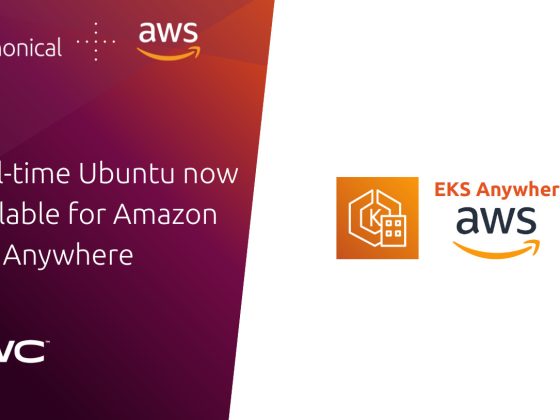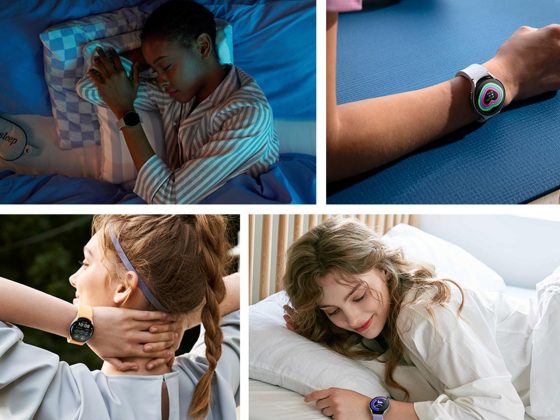Babbel is driven by a mission: Everyone. Learning. Languages. This means building products that help people connect and communicate across cultures. 14 languages are available to learn through 60,000 lessons with 50 hours of video content and 70 podcast episodes. The unique approach taken by Babbel is short interactive lessons that rethink traditional language education to get people speaking a new language with confidence.
From our partners:
Babbel = Learning
Babbel started as a desktop experience back in 2007. At that time, language learning was generally done in a classroom or using CDs. We followed the desktop with a mobile app. However, we quickly recognized that the traditional approaches to language learning didn’t necessarily help most people achieve their goal of conversing in another language effectively.
Language learning might be the most difficult puzzle in the world, and there’s not just one way to solve the puzzle: everyone’s different. Some people love learning grammar, while for others that’s their worst nightmare. So, our second realization was that we need to have more than one solution, and to do that we needed to gain a detailed understanding of language learners. That’s why we employ over 150 linguists and learning experts who guide our product design.
People love an app that is always there and ready for use when they want it. But, what’s tough about an app is there’s nobody else there with you: it doesn’t feel like you’re talking to anybody when you’re just talking to an app. This issue is why Babbel is built around conversations because that’s the real reason you want to learn a language. Most people aren’t learning a language just to tick a box. They want to have a conversation; they want to interact and engage. Therefore, all of the lessons in Babbel are built around two people having a conversation.
In the past year, we’ve accelerated our exploration of how to build in and drive conversations, with a lot more experiments on how to bring language learning to people’s lives. We’ve looked at how to use video, podcasts, and online live classes.
This approach is something that we talk about a lot: blended learning. This idea is that there’s more than one way to learn, and a combination is often the best. Sometimes it can be intimidating to learn something new, especially face-to-face; you need a lot of confidence. An app helps people begin their journey but, ultimately, learners need more than that.
This challenge is why we now have social communities where people can engage and live lessons and sessions to put what they are learning into practice. These are important because the science shows that you really start to progress when you get the confidence to speak a language and hold conversations.
Adjusting to the new normal
One of the positive stories of the last 6 months is that we have seen a considerable uptick in people wanting to learn a language. Our weekly users have grown considerably, with a significant number of new subscribers. Also, those new subscribers have stayed with us and kept learning. It’s not only us, but the whole digital learning industry has experienced a huge uptick. That’s very positive, and it gave us the confidence to realize how much growth we can expect. Now we are working harder than ever to create new solutions, to keep people learning.
Around 300 million students have had their education disrupted because of COVID-19. This disruption has seen almost every university becoming a digital teacher, and that’s exciting: it’s going to change the education industry forever.
However, a lot of this isn’t new. Blended learning has been around for a long time. Just like remote working: remote working was around before the pandemic but has now been given a considerable push and become a significant and widespread practice. It’s the same for educational learning. A lot of people were learning remotely. It was becoming more common: you only have to look at digital solutions such as Coursera and edX. With innovation, you sometimes need a trigger, a spark that pushes it, and then it changes an industry forever. Education is going to go through that in the next 5 to 10 years.
These changes are not only affecting individuals’ approach to learning; many businesses, particularly in Europe, offer language learning as a benefit. A company may have brought in a teacher for a weekly German or French lesson in their office. Now they’re reaching out to us, for our app and the services that we offer, such as our online tutoring program. Again, our B2B offerings were there before the pandemic, but we have seen a significant increase in business as companies realize that digital is the best way to serve their needs.
User personas
Many people have started using Babbel in the last 6 months, and many of them hadn’t considered learning a language before. Therefore, we have the challenge of catering to these new users’ needs and delivering learning types that suit them.
To address this challenge we paid close attention to our key user personas and determined the characteristics of the top 5 cohorts in the app. We look at factors such as age and motivation, such as: moving to a new country, starting a new career, or making a wedding speech (you’d be surprised how often wedding speeches crop up as a reason why people are learning a new language) We then use these personas to determine the most important features to deliver over the next year.
From an instructional design perspective, these different types of learners are a challenge. Sometimes people want to lean into the learning process; sometimes they want to lean back. Therefore, we create various learning experiences from the very short to much longer, more in-depth sessions: from something very passive like our podcasts to live human interaction. We’re also starting to classify those learning experiences and recommend them to our learners. This way, we can explore the type, length, and format of learning to find the right one for each learner.
A study we undertook recently looked at the time of the day people log in to learn. We found some very significant patterns. For example, in Latin or Mediterranean countries — such as France, Spain, and Italy — there is mostly no morning learning session. It’s an entirely different culture to northern European users who have a significant early-morning learning session. Therefore, we can’t design one ritual and say this is your learning ritual; we have to personalize. We have to create many different solutions then provide our learners with the ability to build out a program that works for them.
As patterns start to emerge, it gets exciting because the more we learn about how our users learn, the better teacher Babbel can become. There is a significant positive feedback loop here; as a teacher gets better, the student has more trust in the teacher, and students learn better from a trusted teacher.
Why we don’t gamify
We talk a lot about the ‘aha’ moment — it’s the Holy Grail every app developer is trying to achieve — where you show your app’s value to the user. But that is quite difficult to do with language.
We look at how to reward learners, and that’s where conversations come in because conversing is what they’re aiming to do. We could create an app where learners earn up to a thousand points for matching the right picture to the right word. But, if you can express how you’re feeling in a different language or tell a joke, that’s the thing that’s going to make you keep learning.
We are very much guided by that sort of ‘aha’ moment, as opposed to gamification. Gamification is a cheap tool, something like the slot machines you see in Las Vegas. So, gamification is something of a dirty word here at Babbel because we are so motivated to help our learners have that moment of, “I learned something.” However, it’s a big challenge to assist people in seeing what they’ve learned and the knowledge they’ve acquired. We’re trying to help people connect from learning a word or a concept to applying it to communicate.
The evidence that people are progressing is that they’re moving from using the app to the podcasts, then signing up for a live lesson to practice, and then booking a week away for a language adventure. Being able to take someone on that complete journey is something only Babbel is doing.
It’s a long journey. Some people like to pretend that gamification is the way to learn a language easily. But, there’s no easy way to learn a language, it’s difficult, and that’s part of the challenge. The rewarding part is the achievement of doing something for the first time. It’s much better to tap into that, rather than points or a hot streak.
A good example: a lot of apps use the hot streak as a motivation tool. But, what you don’t see is what happens when someone breaks that hot streak: they might disappear for months because of the shame of losing their hot streak, and we don’t want that. We know that life’s challenging: some weeks you might be busy with the kids, your life changes, you might go through a pandemic, life’s crazy. We don’t want people to feel ashamed suddenly. It’s like a diet and why cheat days were invented: if someone broke a diet after 3 months they would say, “Well, the diet is over, I’ll give up.” But we don’t want that, you can cheat one day, and as long as you come back, that’s how you make progress. That’s a much healthier thing to tap into.
Retention is an integral part of our strategy, and we’re delighted that our average user stays for more than a year; for a subscription model company, that’s good. But even if they stay for the year, are they learning? We’re developing much smarter ways of understanding what our users do in Babbel: how much time are they spending in different areas, and what are they doing? We need that data to improve the app and to make sure people are staying and learning.
It is also remarkable how long it takes people to give up on that language learning dream: they will stop using the app some time before they choose to cancel a subscription. This behavior gives us an excellent opportunity to prevent churn by helping people get back on board.
On the go learning
Podcasts have been something of a success for us. We’ve reached over a million downloads, and it’s something that we’re continuing to grow. Everything ties back to conversations: we know that that’s what people want to do. Our podcasts focus on that: two or three people sharing information and stories through basic conversation.
Also, culture is a key part of why people learn a language. They want to understand a new way of thinking, a new culture, and meet new people. Our podcasts focus on that. We feature members of the Babbel team sharing stories of how they learned a language and stories about their country and culture. The trick to any podcast is to talk to the listener, so they feel like they’re listening to their friends: that makes it a lot more interesting.
A big part of that whole strategy is the idea of on-the-go learning. We’re very aware of the problem of too much screen time. The more we can create language learning solutions that enable people to put the screen down the better. Whether they’re chopping vegetables or going for a run, they can still engage with their language journey by listening to a podcast without having to touch the screen. That’s a big victory.
What Babbel does uniquely is to hand-craft each course specifically for each language pair. This means that, for example, the Spanish courses that a native French, German, or English speaker sees are different because each mother tongue brings a different understanding with it: from an English speaker’s perspective, they have to learn the basics of masculine and feminine forms because those don’t exist in English. But a French or German speaker will be familiar with this concept.
However, podcasts are difficult to scale for language learning when you consider language combinations. If you were trying to educate through a podcast for any other topic, it’s simple: you’re probably speaking in English to English speakers. But here we have to think about English speakers learning Spanish, German speakers learning Spanish, French speakers learning Spanish, and all the other combinations you get from our 14 supported languages. You have to create a different podcast for each one of those language learning combinations.
We have been looking for ways to use the podcast medium without creating versions for various learning needs. One example of this is the mixtapes podcasts, where we have a playlist of songs in a language that the podcast host walks-through and explains. This approach ties back into the concept of blended learning, as some people will learn best through music, just as some learn through grammar.
Key Learnings from Covid
To conclude, we often consider what has brought us the success we have with Babbel: what advice could we offer to other up-and-coming developers. After some thought, we came up with 5 key things:
- Purpose: every successful company has a very well defined purpose, and it’s evident in every part of the business. Don’t be shy about investing a lot of time into understanding who you are and then rolling that out, so everyone understands it.
- User personas: understand who your users are and the order in which you want to serve them. You cannot build one solution for everybody in most industries. Be radically user-centric.
- Onboarding: you could have a fantastic app that could serve people for years and years, but if people don’t get past the first day of the first week, it’ll never happen. Build a great onboarding experience.
- Organic retention: resist the urge to gamify, look for ways to reward people that encourages them to stay but doesn’t get them addicted to their screens. Look to build an emotional relationship with your customers.
- Be prepared to pivot: we launched Babbel Travel when people would be booking tickets to go to Costa Rica to learn Spanish. Now they’re not. We’re experimenting with delivering on that promise of travel without getting on an airplane and still be true to our purpose and language learning.
Find out more
Hear Elliott Rayner and John Quintana from Babbel talk to Google about app-based education and how to flourish during changing times in more detail on episode 9 of the Apps, Games, & Insights podcast. Look out for upcoming articles from other episodes in our podcast series.
What do you think?
Do you have thoughts on how app-based education can adapt to these changing times? Let us know in the comments below or tweet using #AskPlayDev and we’ll reply from @GooglePlayDev, where we regularly share news and tips on how to be successful on Google Play.
Source: Medium by Elliott Rayner
For enquiries, product placements, sponsorships, and collaborations, connect with us at [email protected]. We'd love to hear from you!
Our humans need coffee too! Your support is highly appreciated, thank you!








